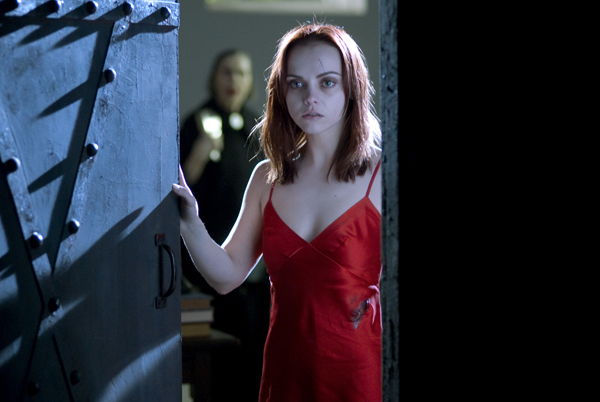|
Reviews of Recent Independent, Foreign, & Documentary Films in Theaters and DVD/Home Video

AFTER.LIFE In the thriller After.life, Christina Ricci plays Anna, a young grade school teacher suffering some kind of existential constipation. She has unexplained nosebleeds, pops pills, and joylessly couples with her yuppie boyfriend (the suitably annoying Justin Long, or as he’s always referred to, “the Mac guy”). After an argument at a fancy restaurant during which Long clumsily tries to propose, Anna gets into a car wreck and then wakes up on a slab in a funeral parlor run by Liam Neeson, a gentlemanly if embittered embalmer. He claims he has a special gift that allows him to speak with the dead and help them accept their death. At first Anna, initially able to move only her head, doesn’t buy it, but as she gradually becomes more and more convinced that she has to make peace with her life’s end, the audience begins to suspect something else is afoot. So does her distraught boyfriend, after he comes across Jack (Chandler Canterbury), a tow-headed but creepy student of Ricci’s who claims to have still seen her moving about through the funeral parlor window. After I left the screening, one fellow reviewer quipped, “They did this kind of thing on The Twilight Zone, and it only took 27 minutes with commercials.” Fair enough, though I’m sure the many scenes where Ricci lolls around completely naked in the embalming room would not have passed the censors. But luckily for ’50s television, it wasn’t afflicted with the film’s arty pretensions, signaled well in advance with the twee, gimmicky period between “after” and “life” in the title.
Still, the artiness does contain some artistry, and if the film doesn’t
crack along with the ruthless focus of a Rod Serling script, it does
draw you in with its “is-she-dead-or-isn’t-she?” premise, and it’s all
quite handsomely shot.
After.Life
also seems more engaged by its existential questions than final plot twists,
and, without giving too much away, remains rather ambiguous even after
the film ends, though perhaps more because of plot incoherence than
anything else. Unfortunately, what the movie does share with television is a
hopelessly generic sense of place. Except for the palatial funeral home,
every location—and most characters—are so unimaginatively and lazily
realized (pill popping, really?) you almost suspect it’s on purpose.
Brendon Nafziger
|

